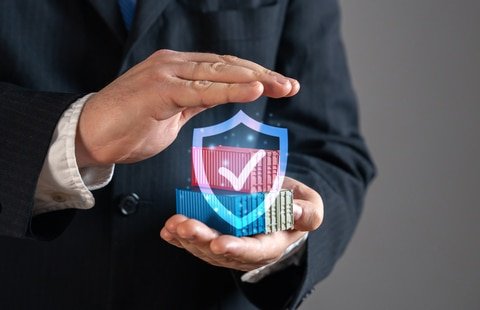Poor System Controls Affect More than Products and Services
When most people think of quality, they think of products. Will the component or end-product last, fit and meet customer needs? But quality is also a key component of supply chain risk management programs.
Just like your products or services, a quality supply chain risk management (SCRM) program is unique to your organization. After all, as we recently discussed, the cost of doing nothing is a quality concern.
Continuing with this theme, excellent product, service and supply chain quality takes planning, engineering, testing and considers all customer requirements. We strive for quality products and services. Quality failures can be minor or have catastrophic results.
Ensuring quality means paying attention to your processes, system configurations and security measures. Building quality into those functions takes planning and testing. But it is essential to ensure they meet the needs of your internal and external customers.
Poor system controls can open the door to a multitude of vulnerabilities. Waste and defects (variations) multiplied by inefficiencies mean your people, systems and processes have to spend a lot of time fixing things.
If you don’t embed quality into supply chain risk management, your products, services and bottom line will suffer.
Building Quality into Risk Management DNA
Building a quality risk management plan is a systematic, risk-based approach. A solid supply chain risk management program includes risk assessments, risk identifications, analysis and risk evaluation.
Such a program is like a well-tuned proactive system. The system helps organizations detect, assess and respond to threats before they become crises.
For an effective risk management framework, core components and processes must work together in a systematic and integrated manner. This ensures long-term success.
The process begins with risk identification, which involves uncovering potential threats that could impact organizational objectives. These threats span across financial, operational, strategic and compliance domains. Once identified, these risks undergo risk assessment, a process that evaluates their likelihood and potential impact using tools such as risk matrices, heat maps and scenario analyses.
This feeds into risk evaluation, which further analyzes risks based on their probability and severity, allowing them to be ranked and prioritized accordingly.
Following risk evaluation, organizations engage in risk analysis and response planning, making decisions on how to address each risk. Options typically include avoiding the risk, mitigating it through controls, transferring it via mechanisms like insurance or accepting it where appropriate.
Monitoring and review support these efforts by continuously tracking key risk indicators. Your teams must reassess risks as internal and external conditions evolve.
Throughout this cycle, communication and reporting play a vital role. Teams must consistently inform all stakeholders about identified risks and the responses in place. Underpinning all these elements is governance and culture. Your organization must commit to fostering a risk-aware culture.
Leadership support is key. Leaders must define policies and establish clear accountability structures.
Turning Risk Management into Strategic Advantage
In parallel, several key processes enhance the practical application of risk management strategies.
A critical component is aligning risk management with overarching business objectives to embed risk considerations into all decision-making activities. Root cause analysis is also essential, enabling the design of more effective mitigation measures.
Organizations must measure and track performance. This requires blending qualitative and quantitative metrics, providing insight into overall risk exposure and the effectiveness of responses.
Technology plays a transformative role. Data analytics tools improve visibility into risks, forecasting potential issues and enhancing the agility of responses.
Furthermore, quality teams must select the right key performance indicators (KPIs). The right KPIs measure both the effectiveness of supply chain risk management and broader supply chain performance. These KPIs typically include metrics such as inventory turnover, order fulfillment accuracy and on-time delivery.
Regularly monitoring and analyzing these indicators serve as ongoing quality checks. These checks help ensure that supply chain strategies remain robust and responsive.
When these core components and key processes work in harmony, supply chain risk management transforms from a safety net to a strategic advantage.
Aligning Technology with Quality Objectives
Of course, like any business process in the computer age, application software plays a key role. Teams must align software to meet business requirements. After all, your supply chain management teams will rely on software for help with data analytics, decision-making, KPIs and more.
You can measure software quality and reliability by:
- Identifying system bugs, product defects or application issues during production.
- Analyzing system network and hardware malfunctions.
- Testing applications under various stressful conditions.
- Asking for and implementing feedback from your end users and external customers.
- Evaluating and taking action on any software issues with your IT team and/or your software provider.
Your teams must map your processes to your software setup and application functions. Collaborate with applicable stakeholders, including your security team, to ensure objectives will be met.
Another critical component is your third-party risk management program. This program should include vendor sourcing diversity, vendor financial health assessments and supplier quality audits.
Finally, ensure that your supply chain risk management program protects your internal customers and end users. Such education and cybersecurity awareness should include their role in mitigating risks.
Managing Disruption with Confidence
So, what happens when everything goes wrong? Well, this is where two additional parts of your quality supply chain risk management program come into play:
- Disaster recovery plan: A recovery and contingency plan is essential for handling disruptions. Natural disasters and machine breakdowns happen. This plan outlines specific actions your teams should take in the event of any incidents.
- Down-time procedures: At some point, production systems go down. It’s inevitable. So, ensure that you have detailed manual procedures to complete your business processes.
Quality Is a Choice, not an Accident
Developing a high-performing supply chain risk management program requires more than good intentions. It demands rigorous planning, strategic alignment, continuous testing and a deep commitment to quality at every stage. When executed well, such a program doesn’t just safeguard against disruption; it drives agility, resilience and operational excellence.
Quality-driven risk management goes beyond avoiding losses to securing your supply chain as a competitive advantage. It protects critical assets, empowers your people and processes, and ensures continuity in the face of uncertainty.
Having trouble figuring out how to build quality into your supply chain risk management processes? Tompkins Ventures brings the expertise, tools and strategic insight necessary. Let us help you build and sustain a resilient, risk-aware supply chain.
Because in today’s world, quality is imperative.
Related Reading
- When Tariff Wars End, Fishing Nets Will Beat Fishing Poles
- The Cost of Doing Nothing About Supply Chain Risk
- Workforce Development for Reshoring American Manufacturing

Tompkins Ventures Business Partner David Williams holds a bachelor’s degree in economics and is a Certified Public Accountant (CPA) in the state of Texas. He is also a Certified Supply Chain Professional (CSCP) through ASCM and has earned two certificates in supply chain risk management, along with a certification in cybersecurity through ISC2. With extensive experience in supply chain management, David specializes in building resilient supply chains through effective procure-to-pay processes, robust risk management frameworks and heightened cyber awareness.


Your blog is a constant source of inspiration for me. Your passion for your subject matter is palpable, and it’s clear that you pour your heart and soul into every post. Keep up the incredible work!